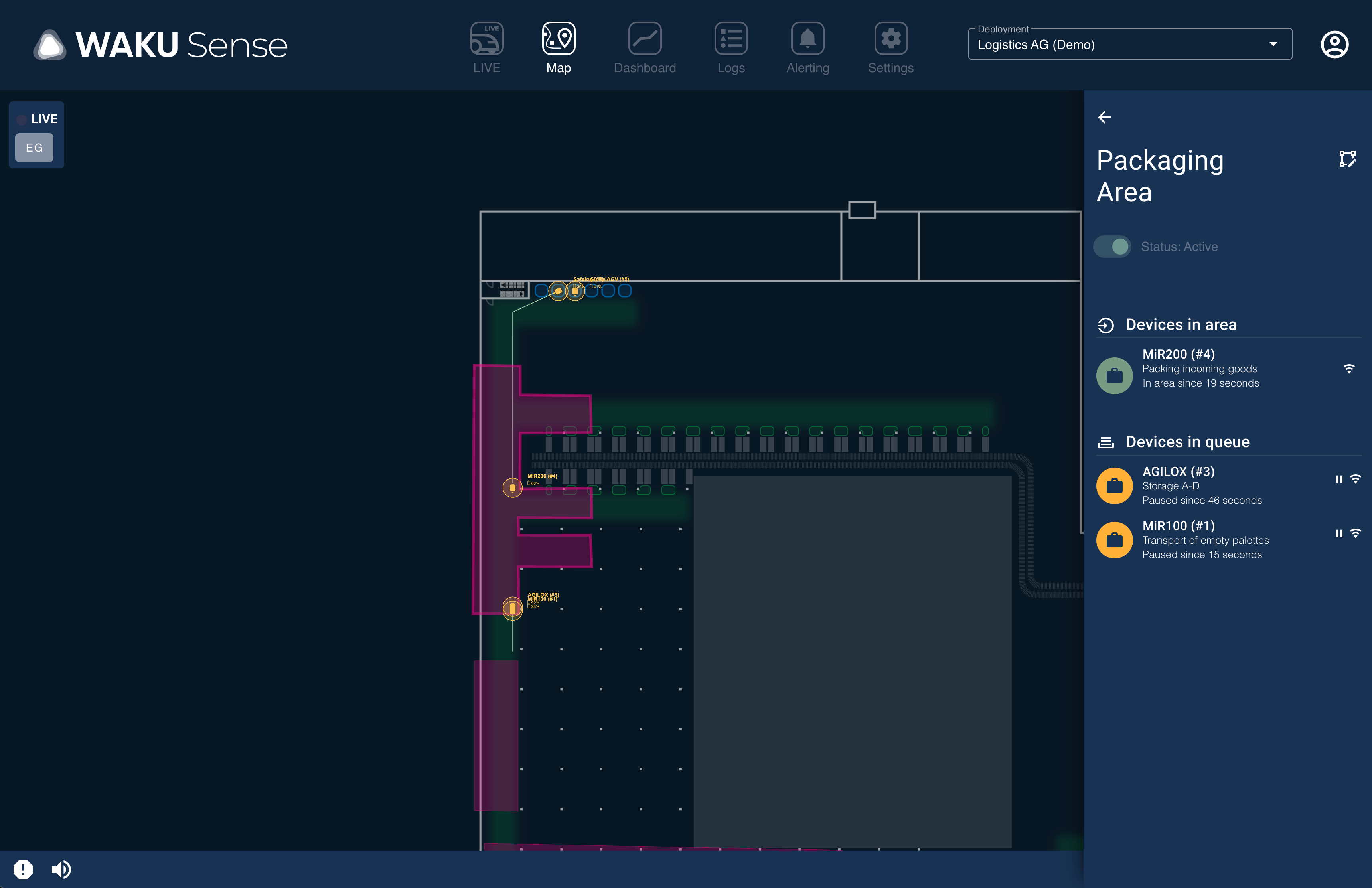How to Avoid the ‘Robo Dance’ with Effective Traffic Management
Most of us associate the term ‘Robo Dance’ with positive attributes. Immediately, images of dancing robots performing human movements or people imitating robots come to mind - which admittedly can look very funny. But in intralogistics, the ‘Robo Dance’ tends to cause frustration because it massively disrupts the process flow. With WAKU Platform, we are working on a solution so that mobile robots (from different manufacturers) can be operated without any problems. We asked our software engineer and robotics expert, Stefan Weigert, how the ‘Robo Dance’ comes about and how it can be prevented.
Reading time: ca. 2 minutes
Editor: Stefan, what exactly is the ‘Robo Dance’?
Stefan Weigert: All autonomous mobile robots have a built-in safety system. This helps the robot to "see" when it approaches an obstacle. This can be a wall, a human, or of course another robot. The robot reacts to this with an evasive maneuver. This allows it to drive around the obstacle. Now two mobile robots collide. Since the robots usually do not agree in advance who is avoiding whom, both initiate these maneuvers. Now, of course, it can happen that both break out in the same direction and the whole thing starts all over again. Depending on the situation, this can happen more than once in a row. Then it looks like the mobile robots are dancing with each other and the ‘Robo Dance’ happens.
Editor: Okay, that really sounds like a situation that should be prevented at all costs. When is the ‘Robo Dance’ particularly critical?
Stefan Weigert: This is particularly critical in narrow aisles since the chance for “confrontations” is higher and evasive maneuvers are not always possible..
Editor: How can WAKU Platform prevent this situation?
Stefan Weigert: With WAKU Platform, zones (‘areas’) can be defined in which only one robot may drive. If a robot is in the zone, it is closed for other robots. If you protect particularly narrow corridors with such a zone, you can ensure that the robots only meet where there is enough space to perform evasive maneuvers.
Editor: That sounds very good at first! But how can I define these zones? Do I have to have any programming skills?
Stefan Weigert: No, you don't need any programming skills for that. We work with an intuitive user interface (no-code), which means that anyone can operate the software. These zones can easily be “drawn” on the map using the mouse.


Editor: Really interesting. What if I operate a mixed fleet, does that work the same way for different mobile robots?
Stefan Weigert: They apply to all integrated robots since WAKU Platform transfers all robot coordinates into a uniform coordinate system. Human-driven forklifts can also be integrated here. Although we cannot stop them when they enter a zone that is already blocked by another robot, we can use visual or acoustic signals to let the driver know when they may enter the zone. Of course, once a human-driven forklift enters a zone, it will block it for any other robot automatically. No additional manual input is needed here.
Editor: Thank you Stefan for these insights into WAKU Platform!
For more information on WAKU Platform, visit www.waku-robotics.com/platform. With WAKU Platform you have full control of your mobile robots.
Book your free WAKU Platform demo now!
WAKU Robotics supports you in choosing the right robot for your application. We take care of the procurement of the robots as well as the on-site test. Our WAKU Platform software helps you to operate the robots across manufacturers and to analyze the processes.
Contact WAKU